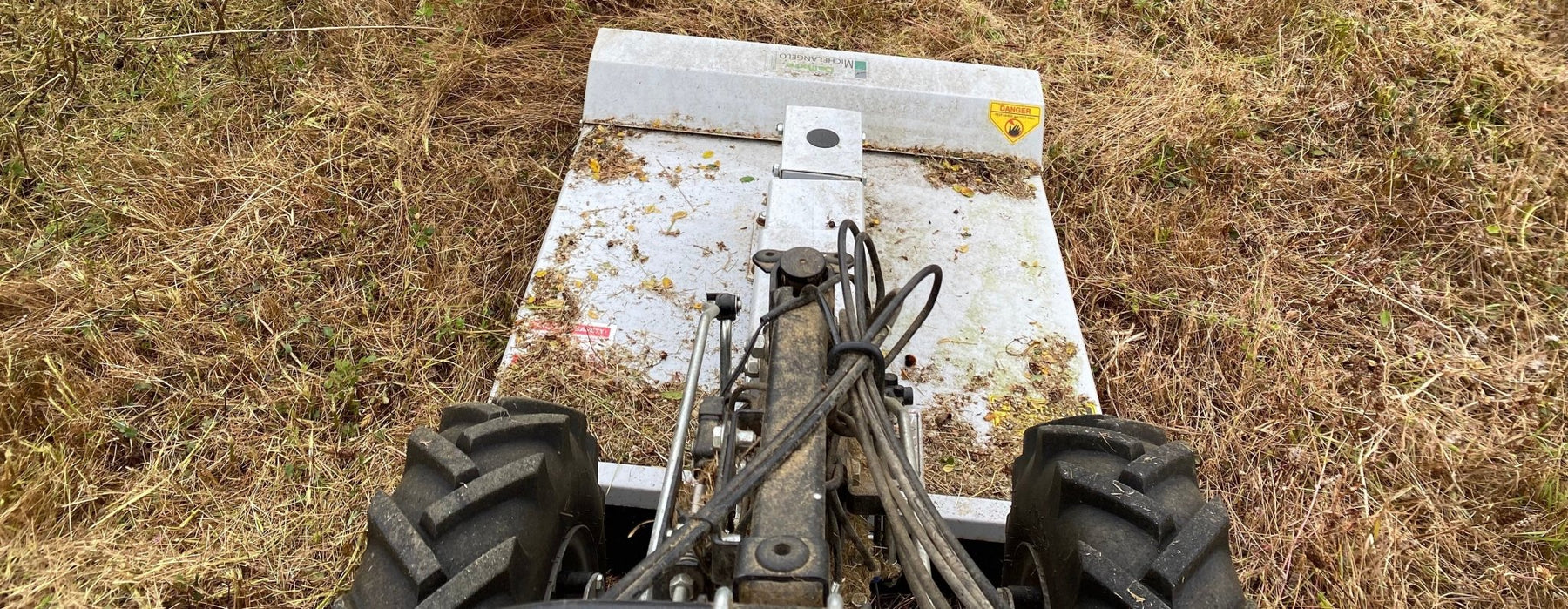
Meadow Management Season
October is the month of foggy mornings. Of vast dew-covered spider webs tangled in the hedgerows. It’s the month of field cutting. Of meadow management.
There’s a common assumption that you can plant a meadow and then just ignore things.
And you can, up to a point. But the more hands-on you are, the more colorful and life-filled your meadow will be. Ultimately, if you do ignore a meadow, it will eventually become less colorful. First it will become weedy and grassy. Then it will become brambles and thistles.
So, we manage our meadows.
At a minimum, we try to hand-weed meadows, especially throughout August and October. This is a time when the shasta daisies, tansy, and false dandelions are usually still green and obvious, even as most of the native wildflowers have dried out and gone to seed. This process is never perfect, and we never get every weed. But the more weeding we get done, the better things look, year after year.
If you’ve been growing a meadow, you might at least take this simple step to heart, and do some of your own weeding right now. In the process, you’ll discover small mysterious wonders – the preying mantis egg case, the shed deer antler, the rough agate, the vole trail, the agile lacewing, the odd fragment of a broken bottle with a story to tell, the fascinating little plant that you never seeded but which somehow migrated to your meadow from elsewhere. Meadows are an infinite cosmos of all these mysterious things.
If you can do more, you should cut your meadow as low as possible in the days ahead. If you have desirable late season plants like gumweed, try to mow around them, but cut your meadow if you can. Use a weed whip if you have to. This will help keep out the blackberry, the scotch broom, and the buddleia.
And if you can still do more, rake off the cuttings after you mow. This is a valuable, but usually overlooked management practice. Pile all of that biomass off in a corner, where the insect eggs and larvae can complete their life cycles. Raking off the cuttings gives your ground light and space for new seedling germination and growth the following year. It reduces the thatch and organic matter that will eventually favor grasses over wildflowers. Leave the leaves in a forest. But try to rake off your meadow.
Finally, consider overseeding your meadow. Few people do this, but we do it every year. Success is slow. Many seeds will simply get lost in the mowed stubble and not germinate. But you’re making up for lost time – for all the years and decades before your meadow was of your making. You’re making up for all the years when thousands of new weed seeds were carried into that space by wind and tires and animals, embedding themselves into the soil, creating an ancient repository of resting weed seeds. By overseeding additional wildflowers every year, you are tipping the balance sheet in your favor, adding more good things, many of which will someday germinate – sometimes even years later –surprising you with things you forgot were ever planted.
***
By the way, much of what we can tell you about meadow management, can be found in here.
